Classification of electric drives
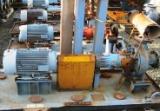 The classification of electric drives is usually made according to the type of movement and controllability, the type of electrical and mechanical transmission devices, the method of transmission of mechanical energy to the executive organs.
The classification of electric drives is usually made according to the type of movement and controllability, the type of electrical and mechanical transmission devices, the method of transmission of mechanical energy to the executive organs.
They differ in the type of movement electric drives rotational and translational one-way and reverse motion, as well as electric drives for reciprocating motion.
Based on the principle of controlling the speed and position of the executive body, the electric drive can be:
-
unregulated and variable speed;
-
follower (with the help of an electric drive, the movement of the executive organ is reproduced in accordance with an arbitrarily changing reference signal);
-
software-controlled (the electric drive ensures the movement of the executive organ in accordance with a given program);
-
adaptive (the electric drive automatically provides an optimal mode of movement of the executive body when the conditions of its work change);
-
positional (the electric drive provides adjustment of the position of the executive body of the working machine).
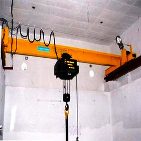 The nature of the mechanical transmission device distinguishes between a geared electric drive, containing one of the types of mechanical transmission devices, and a gearless drive, where the electric motor is directly connected to the drive.
The nature of the mechanical transmission device distinguishes between a geared electric drive, containing one of the types of mechanical transmission devices, and a gearless drive, where the electric motor is directly connected to the drive.
By the nature of the electrical conversion device, I distinguish:
-
valve electric drive, converting device in which is a thyristor or transistor power converter;
-
controlled rectifier-motor system (UV-D) - valve electric direct current drive, the conversion device of which is a rectifier with adjustable voltage;
-
system frequency converter - motor (PCh -D) - valve electric AC drive, the converter device of which is adjustable frequency converter;
-
generator-motor system (G-D) and motor with magnetic amplifier (MU-D) — adjustable electric drive, the converter unit of which is respectively an electric machine converter unit, or magnetic amplifier.
According to the method of transferring mechanical energy to the executive body, electric drives are divided into group, individual and interconnected.
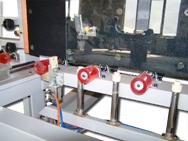 A group electric drive characterized by the fact that several executive bodies of one or several working machines are driven from one engine through the transmission.
A group electric drive characterized by the fact that several executive bodies of one or several working machines are driven from one engine through the transmission.
The kinematic chain in such a drive is complex and cumbersome, and the electric drive itself is uneconomical, its operation and the automation of technological processes are complicated.As a result, the electric drive of the transmission is currently almost not used, giving way to separate and interconnected ones.
Individual electric drive characterized by the fact that each executive body of the working machine is driven by its own separate motor. This type of drive is currently the main one, because with an individual electric drive, the kinematic transmission is simplified (in some cases completely excluded) from the engine to the executive body, the automation of the technological process is easily carried out, and the service conditions of the working machine are improved.
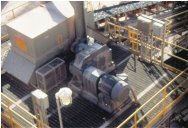 The individual electric drive is widely used in various modern machines, for example: in complex metal cutting machines, rolled metallurgical productions, lifting and transporting machines, robotic manipulators, etc.
The individual electric drive is widely used in various modern machines, for example: in complex metal cutting machines, rolled metallurgical productions, lifting and transporting machines, robotic manipulators, etc.
An interconnected electric drive contains two or more electrically or mechanically connected separate electric drives, during the operation of which a given ratio or equality of speeds, or loads, or the position of the executive organs of the working machines is maintained.
The need for such a drive arises due to design or technological reasons. An example of a multi-motor interconnected electric drive with a mechanical shaft is the drive of a long belt or chain conveyor, the drive of the platform of the swing mechanism of a power excavator, and the drive of the general gear of a power screw press.
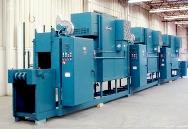 In the event that in an interconnected electric drive there is a need for the constancy of the ratio of the speeds of the working organs that do not have mechanical connections, or when the implementation of mechanical connections is difficult, a special electrical diagram of connecting two or more electric motors is applied, called a diagram of electric shaft.
In the event that in an interconnected electric drive there is a need for the constancy of the ratio of the speeds of the working organs that do not have mechanical connections, or when the implementation of mechanical connections is difficult, a special electrical diagram of connecting two or more electric motors is applied, called a diagram of electric shaft.
An example of such a drive is the drive of a complex metalworking machine, electric drive of locks and movable bridges, etc. Interconnected electric drive is widely used in paper machinery, textile machinery, metallurgical rolling mills, etc.
In the metal-cutting machine, the movement in different coordinates necessary to process a part is provided by separate electric drives. Together they can be called a multi-motor electric machine drive.
Likewise, a multi-motor excavator electric drive combines separate electric drives for the main work operations (head, lift, swing and drive). At the same time, there are electric drives, when the same executive body of a working machine is driven by several motors, which in some cases makes it possible to reduce the force in the executive body, to distribute it more evenly, etc.
Thus, the multi-motor electric drive of a long scraper conveyor, compared to a single-motor one, has a more even load and a lower tension on the pulling element-chain.
According to the degree of automation, electric drives can be divided into manual, automated and automatic. The last two types of electric drives are used in the majority of cases.
A. I.Miroshnik, O. A. Lysenko
